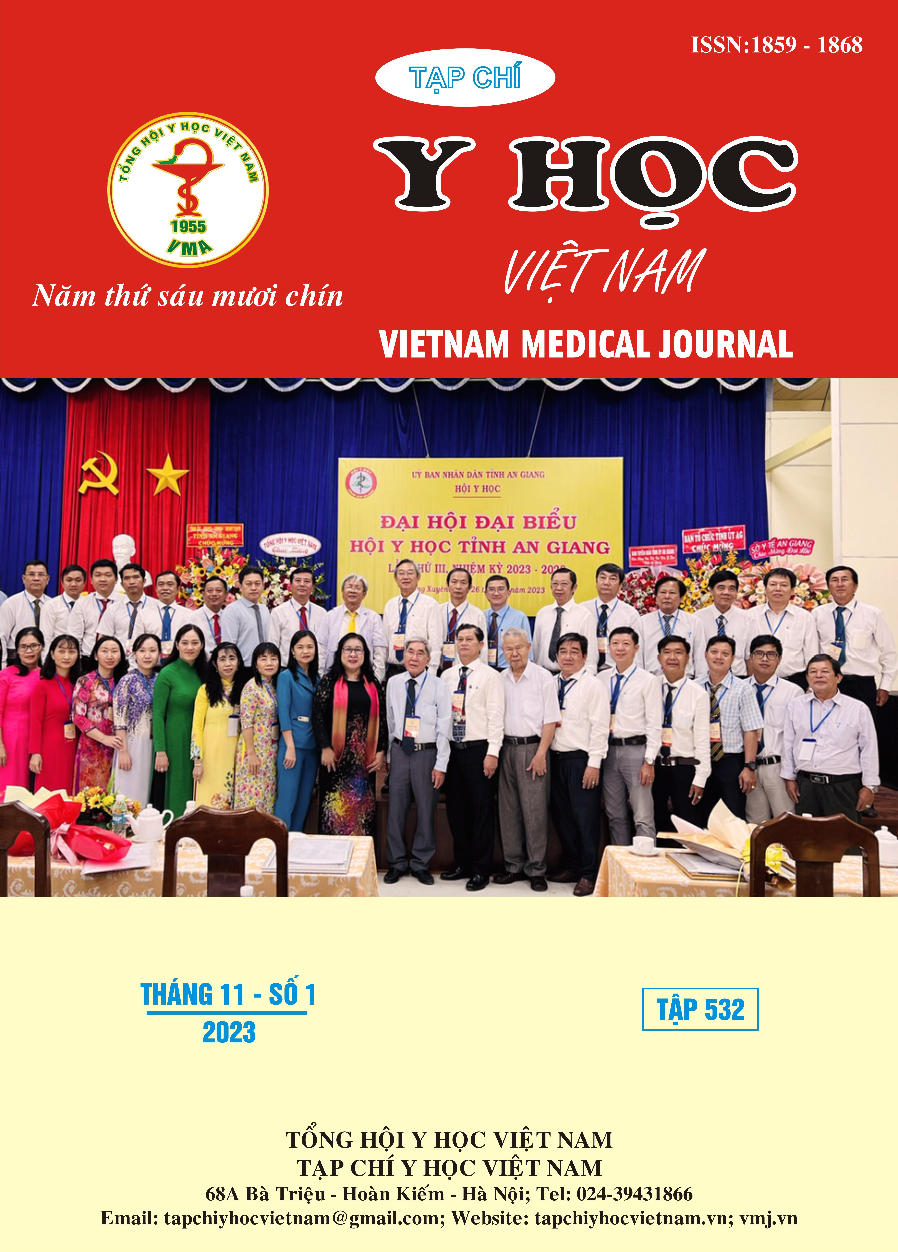RESEARCH SITUATION OF BLOOD LIPID DRUGS AND SURVEY OF THE CORRELION BETWEEN LDL-C CONCENTRATION QUANTITATIVE BY DIRECT AND INDIRECT METHOD AT CAN THO CITY GENERAL HOSPITAL, 2021
Main Article Content
Abstract
Background: High blood fat or dyslipidemia is when LDL-cholesterol or triglycerides or both increase in the blood, easily leading to the risk of myocardial infarction, stroke, etc... Objective: Survey the characteristics of dyslipidemia in patients assigned to have adiposity testing at Can Tho City General Hospital, 2022. Materials and methods: Research Cross-sectional, retrospective description of over 3700 blood samples of patients with indications for lipid testing including: cholesterol, triglycerides, HDL-C and LDL-C at the testing department of Can Tho General Hospital, 2022. Results: 1963/3700 (53.1%) participants were female and the age was mainly over 45 (84.2%). Most of the diseases examined were cardiovascular diseases (39.3%) or cardiovascular diseases with diabetes (25.7%). The rate of lipid disorders was 73.8% and was statistically significantly related to age and pathology at presentation. The classification of dyslipidemia was mainly mixed type (64.4%), and the characteristics of gender and pathology at examination have statistically significant differences with the results of this classification. Conclusion: The rate of dyslipidemia in patients assigned to undergo adiposity testing at Can Tho City General Hospital was high (73.8%). It was very important to maintain the appointment of blood lipid testing for middle-aged subjects and elderly people with underlying diseases.
Article Details
Keywords
dyslipidemia, LDL-C, adiposity, Can Tho General Hospital.
References
2. Huỳnh Lê Thái Bão, Nguyễn Sinh Huy. (2020). Tỉ lệ và đặc điểm rối loạn lipid máu ở bệnh nhân hội chứng vành cấp điều trị tại Bệnh viện Đa Khoa vùng Tây Nguyên năm 2019. Tạp chí Nội tiết và đái tháo đường, (43), tr. 49-54.
3. Quách Tấn Đạt, Phạm Hòa Bình, Nguyễn Văn Tân. (2021), Thực trạng điều trị rối loạn lipid máu ở bệnh nhân hội chứng vành cấp cao tuổi tại bệnh viện Thống Nhất, Tạp chí Y học TP Hồ Chí Minh, Tập 5, số 2, tr.140-146.
4. Văn Tuấn, N., & Thị Cúc, H. (2022). Nghiên cứu rối loạn lipid máu ở người cao tuổi tăng huyết áp. Tạp Chí Y học Việt Nam, 508(1). https://doi.org/10.51298/vmj.v508i1.1533
5. Ngô Đức Kỷ. (2022). Đặc điểm rối loạn các thành phần lipid máu ở bệnh nhân đái tháo đường týp 2. Tạp Chí Y học Cộng đồng, 63(2). https://doi.org/10.52163/yhc.v63i2.295.
6. Bùi Tùng Hiệp, Phan Văn Phong, Quách Thị Thu Hằng, Đoàn Ngọc Giang Lâm. (2022). Một số đặc điểm rối loạn lipid máu trên bệnh nhân đái tháo đường type 2. Tạp Chí Y học Cộng đồng, 63(1). https://doi.org/10.52163/yhc.v63i1.249
7. Nguyễn Trọng Hào. (2016). Nghiên cứu rối loạn lipid máu ở bệnh nhân vảy nến và hiệu quả điều trị hỗ trợ của simvastatin trên bệnh vảy nến thông thường, Luận án tiến sĩ, trường Đại học Y Hà Nội.


